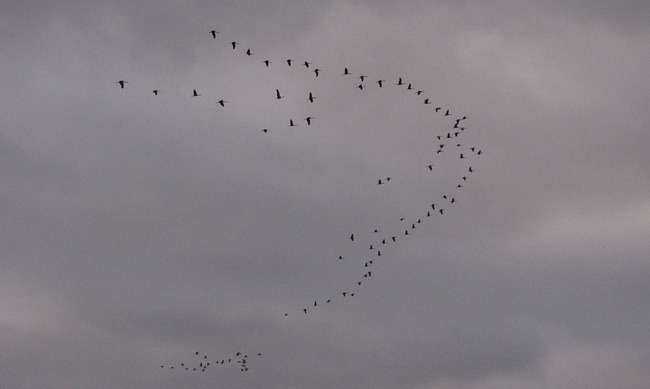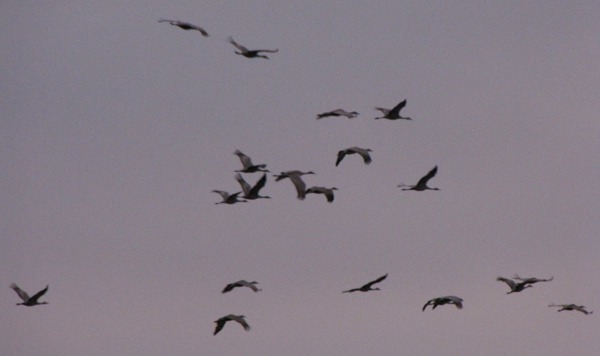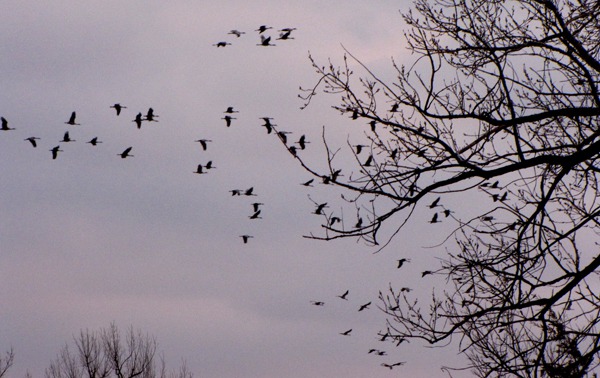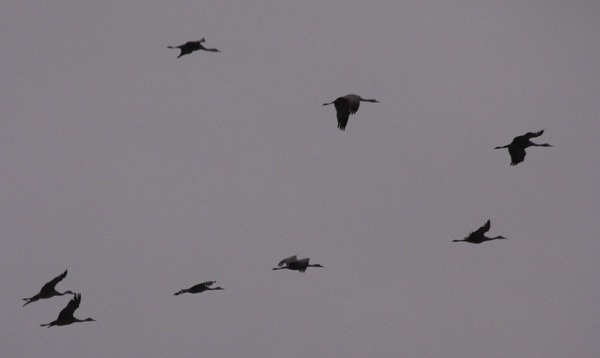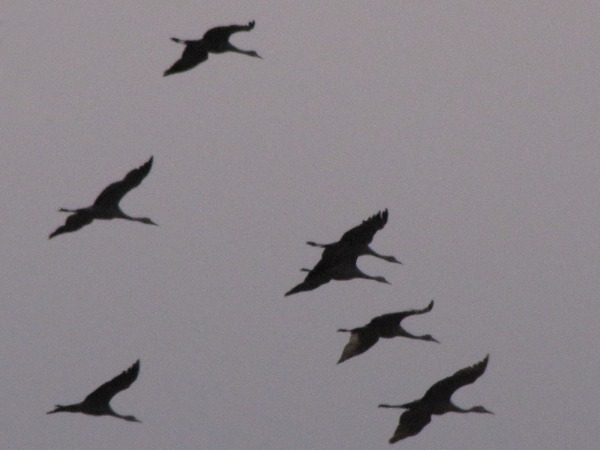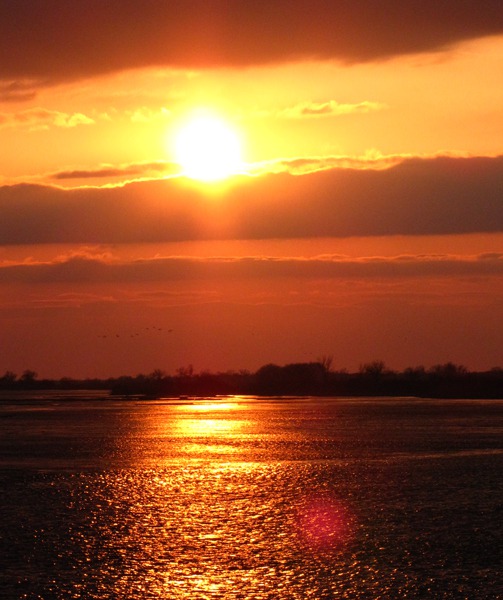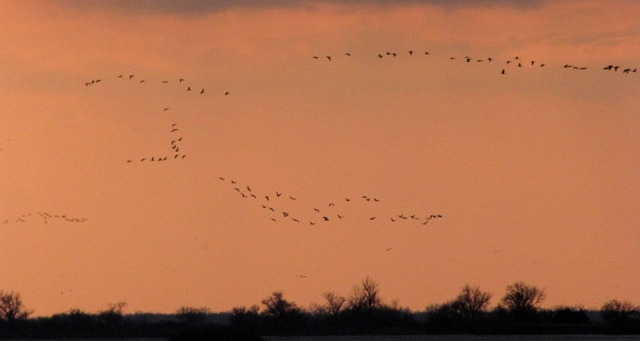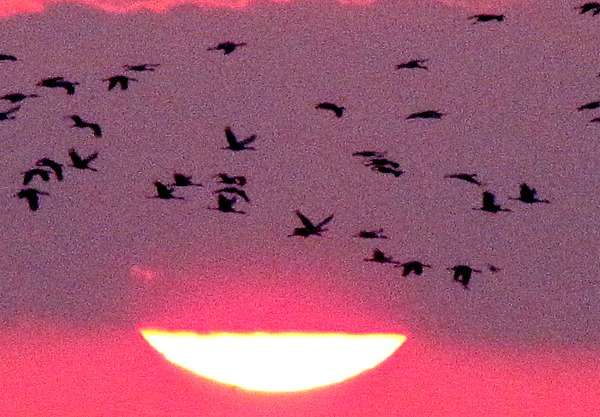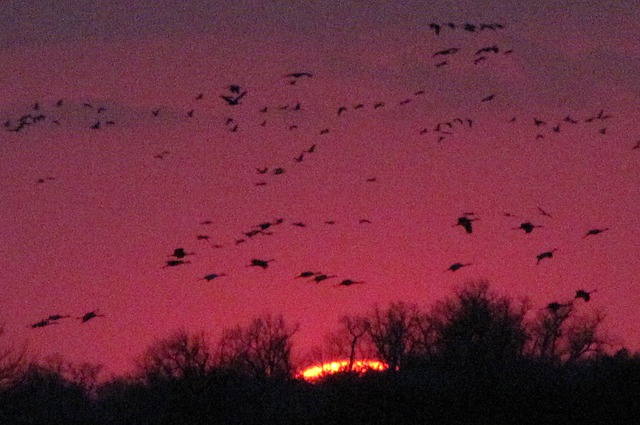At Last, Cranes: 27 Mar 2010: The day had started out blustery and cold as we wandered downtown Kearney (See Crane Quest Day 4a). But the weather improved slightly as the day went on; we were getting the top edge of a big, fast-moving southern snow storm that gave us a piddle of rain and icy wind. Finally the wind dropped a little; the sky started to clear, and the temperature went up a few degrees.
Nevertheless, we bundled up in all the layers we could get on and added hats and gloves before driving the eighteen miles from Kearney to the Rowe Sanctuary, which is along the Platte River east and south of Kearney.
The Rowe Sanctuary is owned and managed by the Audubon Society. As their website states "Lillian Annette Rowe Bird Sanctuary, commonly known as Rowe Sanctuary, is dedicated to the conservation of sandhill cranes, whooping cranes and other migatory birds, and their habitat along the Platte River in south-central Nebraska."
Rowe Visitors Center is a local Audubon Society gem (the gift of primarily one donor who still works as a volunteer at the sanctuary even though she's in her '70's). After going through the exhibits and learning the ins and outs of sandhill cranes (and the Herculean effort that is going into restoring some of the Platte River to a more natural riparian state). We lined up outside in the freezing wind and got a prep talk (no noise, no flash cameras, no lagging behind to pee in the bushes) before going out to the blind.
On the Trail and in the Blind: About twenty of us trooped along behind the volunteer who led the expedition a few hundred yards through the bushes on a gravel path to the blind. The blind itself was a wooden shed tall enough to stand in with "gun slits" that could be closed with a wooden flap when not in use. Soon every slit in the 40-foot-long building had a huge lens, a pair of binoculars, or a spotting scope peering out of it into the gathering gloom. For about the first hour, the only sound we heard was the howl of the wind through the gun slits, the low moaning of the half frozen inside the blind, and the gentle gurgle of the placid and braided Platte River.
Crane Flight to the Platte River: Then one by one, the cranes started flying overhead -- a trickle that soon became a torrent of cranes. The Audubon Rowe Sanctuary estimates that 60,000 cranes stop on this four-mile stretch of the Platte River on their way to breeding grounds in the Arctic.
It reminded us of the bats coming out of Carlsbad caverns forming a dark swirling and seemingly endless river in the sky. Every spring an estimated 500,000 sandhill cranes migrate across Nebraska. They congregate on the Platte River in three primary river sections: from the towns of Kearney to Grand Island, Overton to Elm Creek, and from North Platte to Sutherland on the North Platte River. They have been migrating through this area for 12,000 years, and fossil crane specimens 2.5 million years old have been found.
To say there were thousands of them wouldn't do the crane phenomenon justice. There were tens of thousands, fore-shadowed by their calls back and forth as they figured out who was going to bunk with whom.
They gorge on post-harvest corn-leavings all the live-long day out in fields along the river (adding about 20% to their total body weight before departure) and then sleep in the river at night for safety, camping out on all the sand bars and islands that are out of reach of land-based predators.
In order to avoid disturbing the cranes, we stayed in the blind until it was too dark to see your equipment or feel your fingers any longer. We managed to take some "touch down" video in the fading light, and will see if we can put some of the video clips up after we get back home.
But the camera light was long gone as we left, shuffling along in the wind and the gravel, teeth chattering quietly so as not to disturb the cranes. Long after we left the blind and were back at the motel, the cries of a thousand cranes still resonated in our heads.
Brian and Louise, with photos by Brian. Text and photos copyright -- Goin Mobyle LLC, 2010


